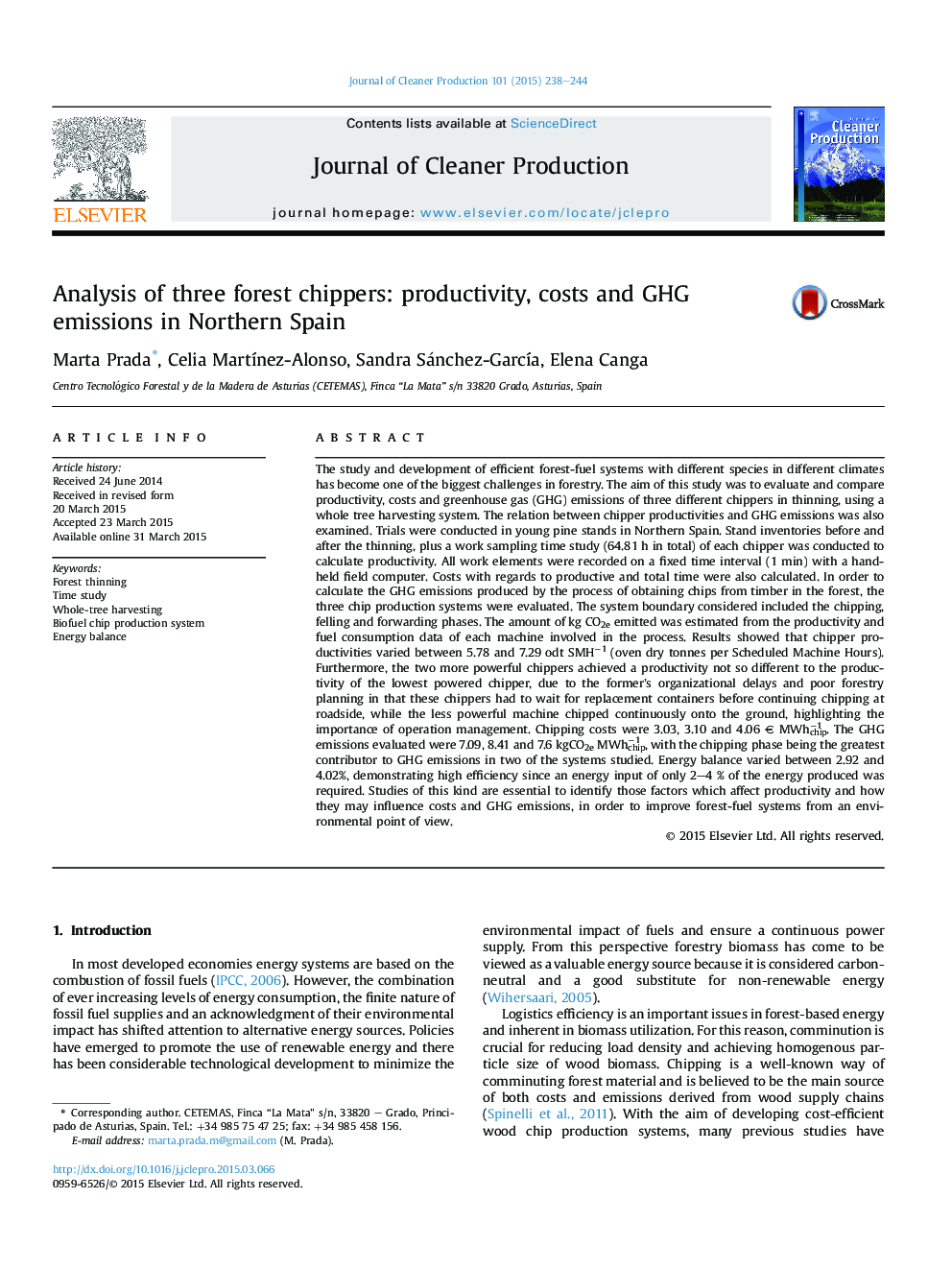| کد مقاله | کد نشریه | سال انتشار | مقاله انگلیسی | نسخه تمام متن |
|---|---|---|---|---|
| 1744594 | 1522145 | 2015 | 7 صفحه PDF | دانلود رایگان |

• Forest chippers were evaluated in terms of productivity, costs and GHG emissions.
• Power engine is as important as organization to obtain good productivity values.
• The GHG emissions were influenced by productivity and fuel consumption.
• The biofuel chip production systems studied were highly energy efficient.
The study and development of efficient forest-fuel systems with different species in different climates has become one of the biggest challenges in forestry. The aim of this study was to evaluate and compare productivity, costs and greenhouse gas (GHG) emissions of three different chippers in thinning, using a whole tree harvesting system. The relation between chipper productivities and GHG emissions was also examined. Trials were conducted in young pine stands in Northern Spain. Stand inventories before and after the thinning, plus a work sampling time study (64.81 h in total) of each chipper was conducted to calculate productivity. All work elements were recorded on a fixed time interval (1 min) with a hand-held field computer. Costs with regards to productive and total time were also calculated. In order to calculate the GHG emissions produced by the process of obtaining chips from timber in the forest, the three chip production systems were evaluated. The system boundary considered included the chipping, felling and forwarding phases. The amount of kg CO2e emitted was estimated from the productivity and fuel consumption data of each machine involved in the process. Results showed that chipper productivities varied between 5.78 and 7.29 odt SMH−1 (oven dry tonnes per Scheduled Machine Hours). Furthermore, the two more powerful chippers achieved a productivity not so different to the productivity of the lowest powered chipper, due to the former's organizational delays and poor forestry planning in that these chippers had to wait for replacement containers before continuing chipping at roadside, while the less powerful machine chipped continuously onto the ground, highlighting the importance of operation management. Chipping costs were 3.03, 3.10 and 4.06 € MWhchip−1. The GHG emissions evaluated were 7.09, 8.41 and 7.6 kgCO2e MWhchip−1, with the chipping phase being the greatest contributor to GHG emissions in two of the systems studied. Energy balance varied between 2.92 and 4.02%, demonstrating high efficiency since an energy input of only 2–4 % of the energy produced was required. Studies of this kind are essential to identify those factors which affect productivity and how they may influence costs and GHG emissions, in order to improve forest-fuel systems from an environmental point of view.
Journal: Journal of Cleaner Production - Volume 101, 15 August 2015, Pages 238–244